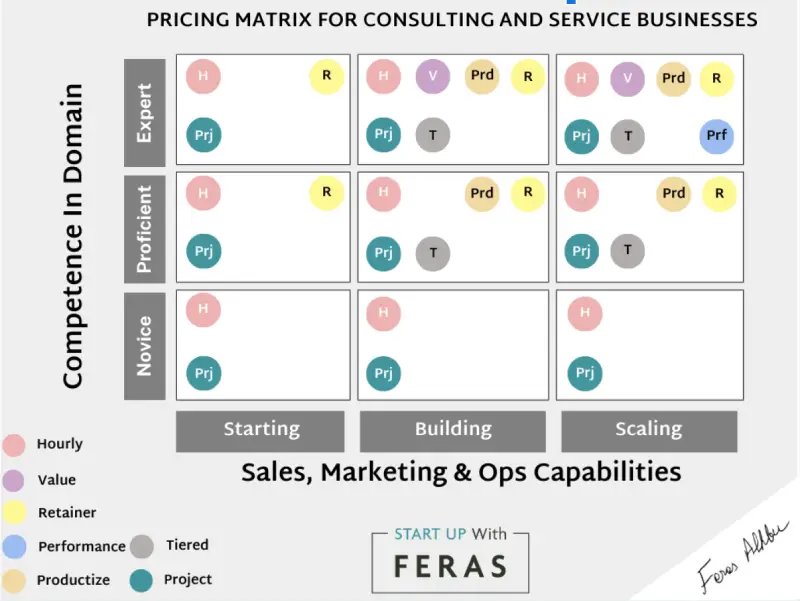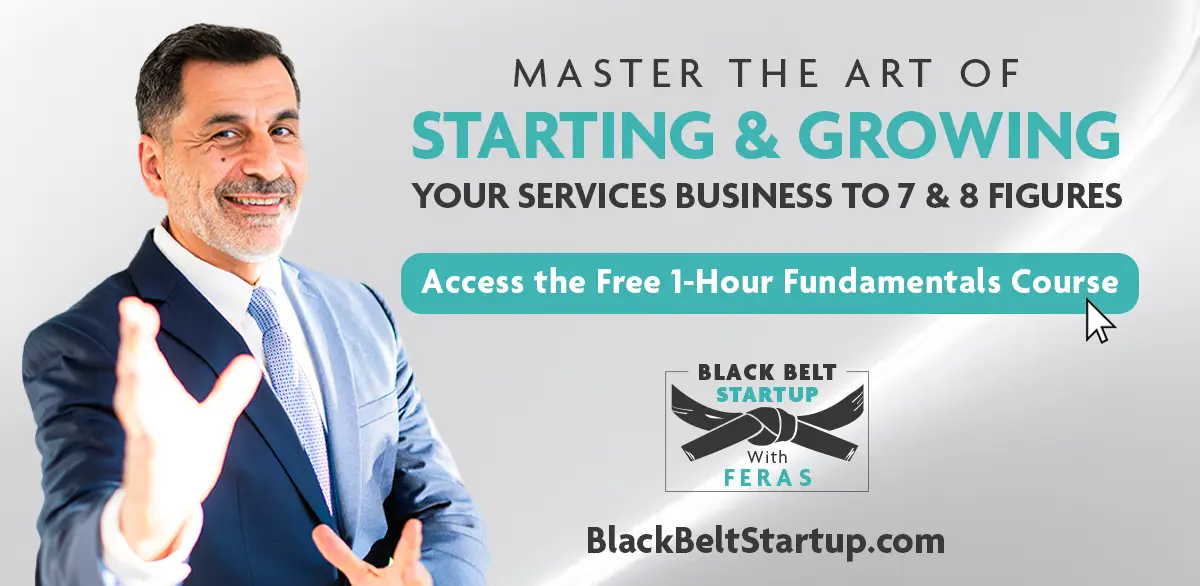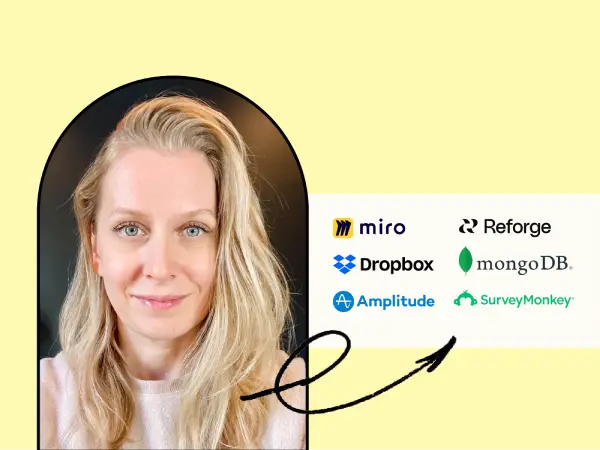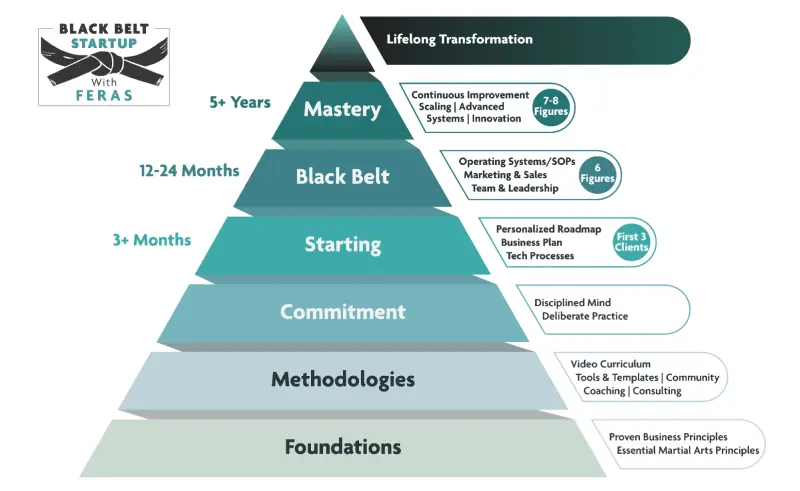Which Pricing Should You Choose?

Good Morning!
I was at a networking event yesterday, and someone I know came up to me and said, “I just watched your video on seeking help… what was that quote?” I said, “Outsource the headache?” They said, “Yep! They [videos] have been so helpful.”
People sharing feedback, good or bad, and especially sharing how they have benefited from the content, is the best thing I can hear.
If you have anything to share, constructive or positive, please reply!
On the Mat
- The Pricing Matrix
- From Pastor to Counseling Practice
- Getting Your Foot in the Door With a Client: How To Use a Wedge
- AI is kicking off the next revolution of B2B PLG
- The Black Belt Startup Framework
Let's Train
The Pricing Matrix
Last week, I broke down 7 pricing models. But models alone don’t tell you when to use what. This week, I go deeper.
Choosing the right pricing model is about what fits your current stage, your offer, and your clients. Some models work better when you're just starting out. Others are made for scaling, or for high-trust, high-impact engagements. Think of it less like finding the “best” model and more like finding the right fit for where you are now — and where you're headed.
To help visualize when these models work best, I’ve mapped them onto a simple matrix. The vertical axis reflects your competence in your domain, from novice to expert. The horizontal axis reflects your sales, marketing, and operational maturity, from just starting out to scaling.

Generally, the more experienced you are and the more dialed in your business systems, the more pricing models you have access to. Simpler models like hourly or project pricing are useful early on and can also work in almost every stage. As you grow, more sophisticated models like value-based, retainers, and performance-based pricing become viable.
I have also turned this into a template for you to use.
Here’s when to consider each model — and where it tends to fall on the matrix:
1. Hourly Pricing:
Works best when you're just starting out and still developing both your domain expertise and your business systems.
- You’re just starting and need simplicity
- The scope is unclear or variable
- Clients need open-ended support
2. Project-Based Pricing:
A natural next step once you’ve built some competence in your domain, but are still developing your marketing and ops.
- You’ve delivered similar work before and can accurately scope it
- Both sides want predictability in cost and timeline
- There’s a clear start and end to the work
3. Value-Based Pricing:
This is typically used by those with deep domain expertise and a well-developed business backend.
- You understand your client’s business well
- Your work significantly impacts revenue or cost
- You have strong positioning or authority in your space
4. Tiered Pricing:
This works well when you’re proficient or an expert in your field and your operations are maturing. It's best for businesses in the Building or Scaling phase, who can clearly segment offerings to meet varied client needs.
- You serve a range of client types with different budgets or needs
- You want to upsell
- Your offer has clear features that you can segment
5. Retainer Pricing:
This model becomes effective as your trust with clients deepens and your backend systems stabilize.
- Clients need ongoing, consistent access
- You want predictable revenue
- You’ve built trust and a strong working relationship
6. Productized Pricing:
Productizing is ideal for businesses with repeatable services and growing operational systems. Most common for proficient to expert providers in the building phase, it allows for consistent delivery without constant customization.
- You offer repeatable services
- You want faster sales cycles
- You want to scale without customizing every engagement
7. Performance-Based:
This model demands both domain mastery and operational strength. It’s most viable when you have the expertise and systems, trust, and confidence to tie your fees to client outcomes.
- You’re confident in the results you deliver
- There’s a clear metric to track
- The client sees your work as tied to outcomes
Each one of these models is a tool. You need to determine when to use which.
If you have any questions, reply and I’ll be sure to respond.
Next week, I’ll cover pricing strategies — the tactics that help you move between models.
If you’re worried about leaving money on the table, check out my mini course. For a limited time, I will meet one-on-one with you to figure out the best pricing model for you!
Ask Feras Recaps
From Pastor to Counseling Practice
Jeremy was a full-time pastor who had built a marriage counseling practice on the side. He’d spent over 15 years guiding people through challenges, building trust, and improving their marriages.
He was now enrolled in an MBA and was wondering if he could apply his new learnt skills to grow his practice. He didn’t want to rush things but wanted a clear plan for when graduation rolled around.
🔥 Challenge:
Jeremy struggled to see how his background fit into business. He questioned whether his skills were transferable, wasn’t sure how or when to start packaging them into an offer, and wondered whether his experience would be taken seriously outside of ministry.
💡 What He Was Doing Right:
He already had real-world leadership experience, a track record of helping people, and was investing in formal business education. He was also mindful of balancing ambition with responsibility.
🛠️ My Advice:
- Research the market: Who's already offering services like this?
- Identify and own transferable skills: conflict resolution, communication, leadership, etc.
- Start building now: website, brand, service descriptions
- Use the time before graduation to plan, validate, and refine
📈 Progress
Jeremy left with a clear roadmap: build slowly, start local, and trust that his unique background is an asset, not a liability. His people skills and leadership experience are exactly what many businesses need.
Details have been changed to protect anonymity and for storytelling purposes.
You Might Like These
You know your service delivers. You’ve seen the results firsthand. But when prospects don’t know you, getting them to take that first step can feel impossible. That’s where a wedge comes in.
A wedge is a narrowly scoped, low-friction offer that solves a specific, immediate problem—an audit, a short trial, a brief consultation. It’s easy to say yes to, quick to deliver, and builds trust fast. And most importantly, it naturally leads to deeper, long-term work.
If you’re struggling to break in or want to grow your client base, you need a strong (sharp 🙂) wedge!
AI and “vibecoding” are opening the door to a new wave of hyper-specific B2B tools—many built by non-technical professionals solving their own pain points. Elena Verna makes a sharp point: PLG (product-led growth) shifted software from bloated features to user relevance.
Now, AI lets niche experts—marketers, ops, sales—create tools no big company would bother building. For service business owners, that means less dependence on one-size-fits-all platforms and more power to shape the tools you actually need.
Worth a read if you’re tired of paying for bloated software you barely use.
Sharpen Your Blade
After building and selling seven service businesses across multiple industries, Eric Fettman and I — alongside our team — poured 20+ years of experience into something we wish we had at the start: a clear roadmap for building a sustainable, scalable service business.
That’s the Black Belt Startup Framework.
It’s rooted in real-world wins and setbacks, shaped by martial arts discipline and entrepreneurial grit. From landing your first three clients to scaling toward 7+ figures, the framework walks you through five stages: Foundations, Commitment, Starting, Black Belt, and Mastery.
Each level helps you focus on what matters most at that stage—whether it's refining your offer, setting up systems, or building a team.
There are no hacks. No shortcuts. Just the real work of turning your skills into a business that lasts.
If you’re serious about this path and want support at every stage, we built the Black Belt Startup community for you.
Subscribe to the Black Belt Startup Newsletter
Weekly, 5-minute insights to help you escape the 9–5, land your first clients, and grow a thriving business.



